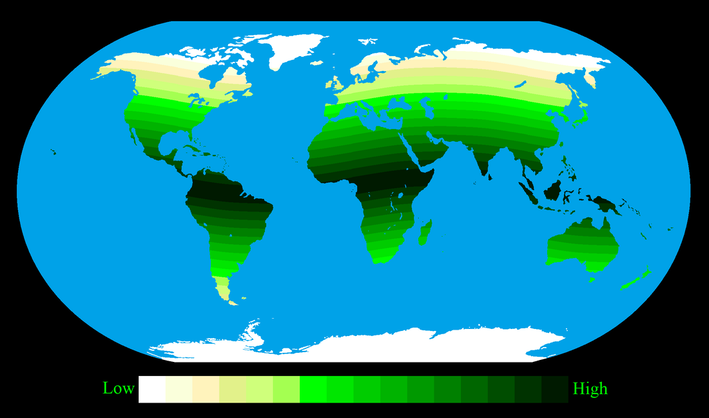|
It takes one hectare of land to provide everything one person needs. That's with all our food and all the goods we use made with plants, not animals and polluting petroleum. Petroleum products use less land in the short-term but considering the pollution it's not sustainable in the long-term and animal agriculture uses more land.
Below is how many people that can live sustainably per square kilometre depending on latitude, with an average of one hundred people. There are also other local variables like the terrain, altitude, climate and ocean currents that need to be considered. |
|
Converting the 50-60 million square kilometres of land that is currently in use into sustainable communities would sustain 5-6 billion people. Making marginal land arable with water catchments 7 billion people is sustainable. And with reforesting the grasslands and deserts 10 billion people is possible.
Once we secure the future our population will find its balance. Overpopulation is caused by fear. Fear of the future and fear of the other. Any attempt at population control will inevitably backfire. In the interest of equality for nature and humanity, half the land is for nature and half of the land of the land for humanity is for indigenous people in colonised countries to grow into sustainable populations. In overpopulated places, the people who were there first get to stay and the more recent arrivals should be the ones to move to less populated places. The movement of light is about righting the wrongs of the past and present for people and for nature, to ensure a future of equality and harmony for all of Earth's beings. |
This work is based on public domain data.







